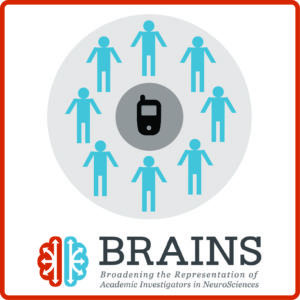 When scientists thrive, amazing things can happen.
When scientists thrive, amazing things can happen.
But how do individual scientists, and particularly those from groups that are historically underrepresented in STEM, gain the opportunities and skills to thrive? Over the past decade, we have designed and executed several national career development programs which use insights from social science research to address this question (1; 2; 3). Central to all our efforts has been engaging peers as mentors, specifically through a mechanism we call Peer Mentoring Circles (PMCs).
Our team has launched over 20 PMCs through our work with BRAINS, WEBS, the University of Washington’s ADVANCE program, and Counterspace Consulting. These PMCs are inspired by the experience of a group of seven women who are scientists and who developed a peer mentoring model over thirty years ago to provide connection, support, and problem solving to members as they navigated their careers and lives (Daniell 2006). As a result of the meetings, which continue today, these women have enjoyed rewarding and productive careers both inside and outside of academia.
In a true peer mentoring model, there is no senior mentor. Instead peers empower peers to solve problems and serve as resources and sounding boards for one another. This also means that there are not one or two members who are looked to for answers or viewed as having the most important advice.
Central to the success of peer mentoring is that all participants have something to give and to gain from the relationship (Bussey-Jones 2006). Our PMCs generally consist of a group of five to eight participants who are at a similar career stage, have complementary fields of expertise, and share social identities (i.e., gender, race, ethnicity, ability status, etc.). The groups meet every other week using a structured format to develop community, set personal goals, discuss professional challenges, and receive constructive feedback with the support of peers.
PMCs can meet in person or via a phone or video conference. The groups typically launch with an experienced guide to help establish the format and tone of the meetings. However, an important component of the PMCs is that they are self-sustaining, and the guide leaves the group after the third meeting if not before. Thus the PMC is truly a program for the participants, by the participants.
So, why do peer mentoring groups work? And why might an individual consider starting or joining a peer mentoring group? Peer mentoring groups provide participants with community, ongoing connection, and a counterspace (i.e., a supportive environment that serves to validate the experiences of individuals from historically underrepresented groups and offers community within which to address career challenges within a cultural context, (Soloranzo 1998, Case and Hunter 2012). Together, these three elements create a foundation for identifying opportunities to thrive and building career skills (Yen et al 2017).
- Community. Participants in PMCs have reported that the peers in their groups are some of the most important people in their careers. A PMC participant wrote her experience of peer mentoring: “Academia is often a lonely profession, and our circle makes me feel much less alone. Now I have my [PMC] to validate my struggles, help me work through a range of challenges, and celebrate exciting milestones with me.” Another PMC participant wrote that she felt like she has “an extra family to go to.”
- Ongoing Connection. Like the “Every Other Thursday” model on which our PMCs are based, biweekly PMC meetings ensure ongoing, rather than episodic, career development that is done with community rather than in isolation. This model of continuous engagement with peers and with their own career development means that participants have access to problem solving and mentoring as they navigate the challenges of their everyday lives. At the end of each PMC meeting, each participant makes a contract with themselves for what they will do over the next two weeks. At the next meeting, participants hold themselves accountable by reporting back to the group on their contracts, thus continuing their connections and career development.
- Counterspaces. An important characteristic of a PMC is that confidentiality is paired with shared social identities among group members (e.g. career stage, gender, race, ethnicity and ability status, etc.). The PMC can then serve as a counterspace in which participants discuss career and life challenges and know a priori that group members have their back. Importantly, PMCs offer a space to engage as their whole selves, combining their social and professional identities without question. A participant from a PMC describe their group as a “place of growth without self-protective walls.”
Peer mentoring circles are a unique and valuable source of mentoring as they offer participants access to ideas, information and new perspectives as well as an opportunity to develop problem solving and mentoring skills. Peer mentoring offers a complementary mentoring opportunity to traditional mentoring models. PMCs can serve as an antidote to the unequal power dynamics of senior mentor – junior mentee models that can exacerbate a sense of isolation, especially for women and people of color (Noe 1988). When well designed, PMCs can foster self-determination, collective identity formation, collaborative problem solving, and sustainable connections (Fraga 2014)*. PMCs are another node in an individual’s broader mentoring network through which they can gain access to the resources and mentoring they need to thrive.
*R. Fraga, “Comment: Mentoring for Institutional Gain,” in A Truly Diverse Faculty: New Dialogues in American Higher Education, 2014, pp. 257–264.
Comments